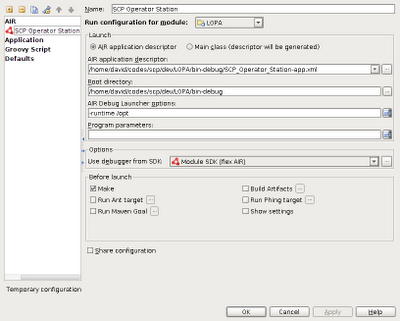http://www.philliphodges.co.uk/?p=435 (note: the adl in bin folder cannot be executed because the downloaded SDK is for Mac OSX not Linux, you need to download Linux version of AIR SDK from http://kb2.adobe.com/cps/853/cpsid_85304.html and copy the the Linux version adl over to /opt/flex/bin)
Install AIR SDK on Ubuntu 10.10 (64-bit):
Debug Configuration:

